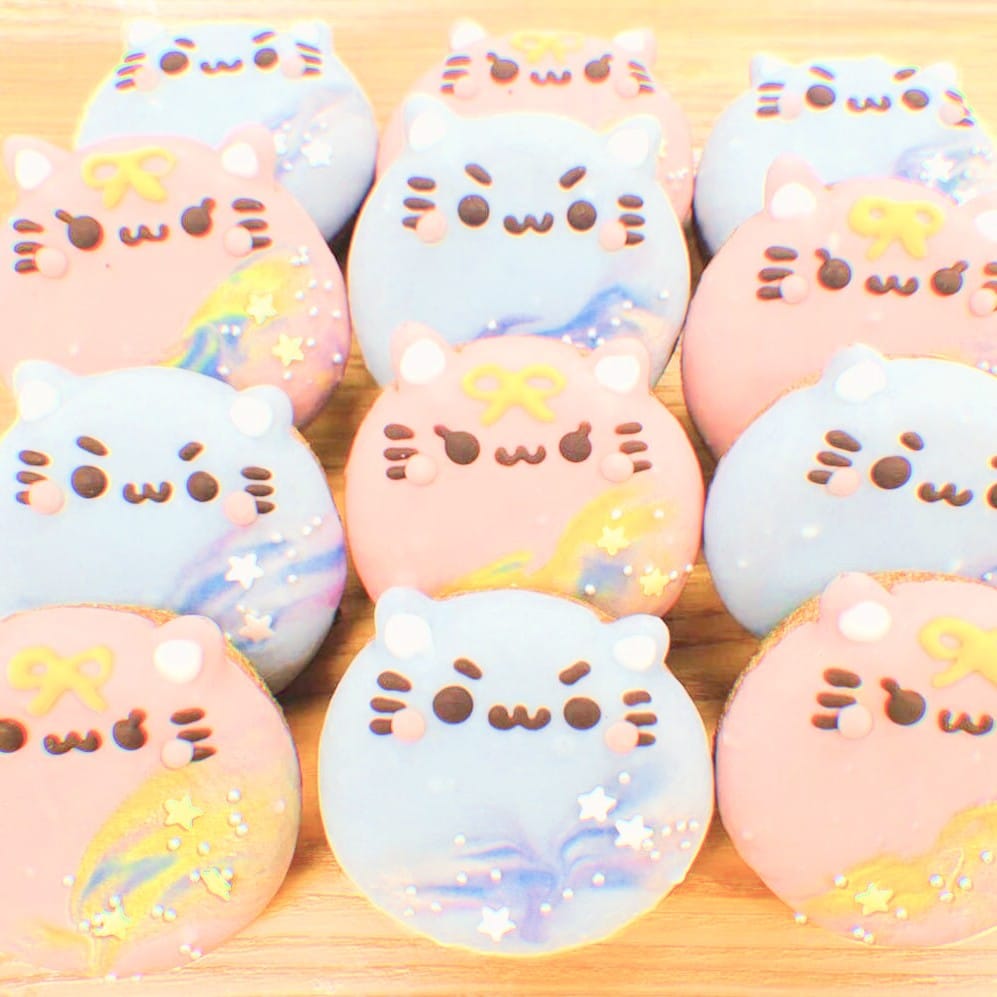Kaomojis have become a significant part of online communication, especially among fans of Japanese culture. These unique emoticons, composed of characters from the Japanese writing system, convey a range of emotions and expressions that can enhance text-based interactions. In this article, we will explore the fascinating world of kaomojis, their history, how to use them effectively, and their impact on digital communication.
Kaomojis, unlike traditional emoticons, are more complex and can represent a wider array of emotions and expressions. They originated in Japan and have since spread globally, becoming popular in various online communities. Understanding kaomojis is essential for anyone looking to enrich their digital communication with a touch of creativity and cultural flair.
This comprehensive guide aims to provide you with all the information you need about kaomojis, including their types, how to create your own, and their cultural significance. Whether you're a novice or a seasoned user, this article will enhance your understanding and appreciation of these charming text emoticons.
Table of Contents
- What are Kaomojis?
- History of Kaomojis
- Types of Kaomojis
- How to Create Kaomojis
- Kaomojis in Digital Communication
- Where to Find Kaomojis
- Impact of Kaomojis on Communication
- Conclusion
What are Kaomojis?
Kaomojis are emoticons that originated in Japan, characterized by their use of a combination of keyboard characters. They are designed to convey a variety of emotions, from happiness to sadness, using facial expressions and body language made from text characters. Unlike standard emoticons, which often use just a few characters, kaomojis can be more intricate and expressive.
For example, a simple happy kaomoji can be represented as (^_^), while a more complex one like (≧◡≦) can express even greater joy. This versatility makes kaomojis a favorite among users who want to add more personality to their messages.
History of Kaomojis
The history of kaomojis dates back to the early days of the internet in Japan, where users sought creative ways to express emotions in text form. The term "kaomoji" itself comes from the Japanese words "kao" (顔), meaning "face," and "moji" (文字), meaning "character" or "letter."
Initially, kaomojis were primarily used in Japanese online communities, but their popularity quickly spread to other countries as global communication expanded. With the rise of social media and messaging apps, kaomojis became a universal language that transcended cultural boundaries.
Types of Kaomojis
There are many types of kaomojis, each designed to convey different emotions. Below are some popular categories:
Happy Kaomojis
- (^_^)
- (≧◡≦)
- (。♥‿♥。)
- (✿◠‿◠)
Sad Kaomojis
- (T_T)
- (;д;)
- (。•́︿•̀。)
- (╥﹏╥)
Angry Kaomojis
- (╬ Ò﹏Ó)
- (ノಠ益ಠ)ノ
- (¬_¬)
- (¬‿¬)
Cute Kaomojis
- (≧ω≦)
- (✧ω✧)
- (。•̀ᴗ-)✧
- (づ。◕‿‿◕。)づ
How to Create Kaomojis
Creating your own kaomojis can be a fun and creative process. Here are some tips for making your own:
- Choose a facial expression you want to convey.
- Use a combination of characters to represent eyes, mouth, and other facial features.
- Experiment with different characters to find the best representation of the emotion.
- Keep it simple or go for more intricate designs depending on your preference.
Kaomojis in Digital Communication
Kaomojis have transformed the way people communicate online. They add a layer of emotional depth to text messages, making conversations more engaging and expressive. In a world where tone and facial expressions are often lost in written communication, kaomojis help bridge that gap.
Additionally, kaomojis have found their way into various platforms, including social media, forums, and chat applications, allowing users to express themselves uniquely and creatively. They have become a staple in online interactions, especially among younger generations who embrace this form of expression.
Where to Find Kaomojis
Finding kaomojis is easy, as numerous websites and applications offer extensive libraries of kaomojis for users to choose from. Here are some popular sources:
- Online kaomoji generators
- Social media platforms
- Messaging apps with built-in kaomoji features
- Dedicated kaomoji websites and forums
Impact of Kaomojis on Communication
The impact of kaomojis on communication is significant. They have changed how people express emotions in text, making conversations more vibrant and relatable. Moreover, kaomojis have contributed to the globalization of digital culture, allowing users worldwide to connect through shared expressions.
As a result, kaomojis have become more than just text representations of emotions; they are now a part of the digital culture that reflects personality, creativity, and cultural exchange.
Conclusion
Kaomojis are a fascinating aspect of online communication that adds depth and personality to text interactions. Their unique ability to convey emotions through a combination of characters makes them a valuable tool for expressing oneself in the digital age. As you explore the world of kaomojis, consider incorporating them into your conversations to enhance your communication style and connect with others on a more emotional level.
We encourage you to experiment with kaomojis and share your favorites in the comments below. If you found this article helpful, feel free to share it with others or explore more content on our site!
We hope you enjoyed learning about kaomojis and their impact on digital communication. Stay tuned for more exciting articles, and we look forward to seeing you again soon!
You Might Also Like
Siamese Cat For Sale: Everything You Need To Know Before BuyingAu Pair In America: A Comprehensive Guide To Your Cultural Exchange Experience
The Ultimate Guide To Salt Bagels: History, Recipe, And More
Is Real Estate A Good Career? A Comprehensive Guide
Crafting The Perfect Business Voicemail Greeting: A Comprehensive Guide
Article Recommendations
- How Old Is Adriana Lima 2024
- Nikki Minja Naked
- Outdoor Propane Heater Table Top
- Collision Repair Before And After
- Global Impact_0.xml
- Convert Excel To Html Table
- Mia Hamm Soccer Player
- Financial Empowerment_0.xml
- Lax Plane Spotting Locations
- Daryl Hannah


